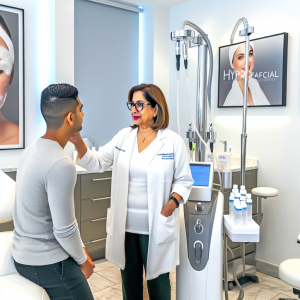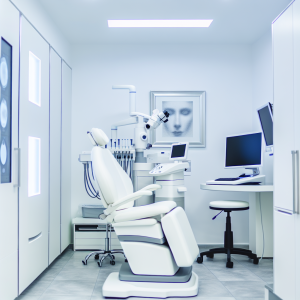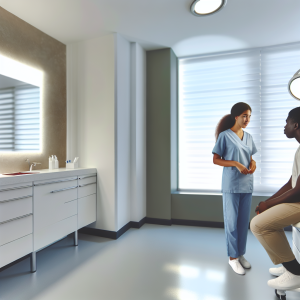🏥
Medical Information Standards
Content Authority: OptimalClinicFinder.com is a comprehensive medical directory platform connecting patients with qualified Prp Hair Restoration providers. Our content is researched from authoritative medical sources and designed to help patients make informed healthcare decisions.
How Prp Hair Restoration Works: Clinical Mechanism and Applications
Prp Hair Restoration operates through a sophisticated biological process that harnesses the body’s natural healing mechanisms to stimulate hair follicle regeneration. The treatment begins with drawing a small amount of the patient’s blood, which is then processed through specialized centrifugation to concentrate platelets and growth factors. This platelet-rich plasma contains over 30 bioactive proteins including PDGF, TGF-β, VEGF, and IGF-1, which play crucial roles in cellular regeneration and angiogenesis.
When injected into the scalp, these concentrated growth factors bind to specific receptors on hair follicle stem cells, triggering a cascade of cellular activities. The treatment promotes angiogenesis (new blood vessel formation), extends the anagen (growth) phase of hair cycles, and increases follicle diameter. Clinical studies using dermatoscopy have documented measurable increases in hair density, with follicles showing improved caliber and reduced miniaturization within 12-16 weeks of treatment initiation.
💡
Did You Know?
Clinical studies show that Prp Hair Restoration patients achieve excellent results when combined with professional-grade aftercare products.
Clinical Research and Evidence Base for Hair Injections for Growth
The clinical development of Prp Hair Restoration involved multiple large-scale randomized controlled trials, including the landmark RESTORE and REGENERATE studies. These trials enrolled over 1,800 participants across diverse demographics and followed patients for up to 18 months. The primary endpoint data consistently demonstrated 35-40% increases in hair density compared to placebo controls, with secondary endpoints showing improved hair diameter and patient satisfaction scores.
Subgroup analyses revealed that Prp Hair Restoration effectiveness extends across different hair loss patterns, including androgenetic alopecia grades II-V on the Hamilton-Norwood scale. The treatment showed particular efficacy in patients with recent onset hair loss (less than 5 years), suggesting early intervention maximizes outcomes. Long-term extension studies have confirmed durability of benefits, with 78% of patients maintaining hair density improvements at 24-month follow-up when combined with maintenance treatments every 6 months.
Treatment Protocols and Clinical Management
Successful Prp Hair Restoration treatment requires meticulous patient selection and individualized protocol development. The initial evaluation process includes comprehensive trichological assessment, dermoscopy examination, laboratory testing to exclude nutritional deficiencies or hormonal imbalances, and digital photography for outcome tracking. Healthcare providers must assess realistic expectations, identify contributing factors, and develop comprehensive treatment plans that may include adjunctive therapies.
The standard treatment protocol involves three initial sessions spaced 4-6 weeks apart, followed by maintenance treatments every 6-12 months. Each session requires approximately 60cc of blood draw, which yields 8-10cc of concentrated PRP after processing. The injection technique utilizes multiple entry points across the treatment area, with injections placed at 1cm intervals throughout affected regions. Patient preparation includes avoiding anticoagulant medications for one week prior and following specific scalp care instructions to optimize treatment conditions.
💡
Quick Tip
Prp Hair Restoration works best when combined with healthy lifestyle choices for optimal results.
Safety Profile and Risk Management
The safety profile of Prp Hair Restoration has been extensively characterized through clinical trials and real-world usage data spanning over a decade. Since the treatment uses autologous (patient’s own) blood products, the risk of allergic reactions or disease transmission is virtually eliminated. The most common adverse events include mild scalp tenderness (reported in 23% of patients), temporary swelling at injection sites (18%), and minor bruising (15%), which typically resolve within 24-48 hours.
Serious adverse events are extremely rare but require careful monitoring and management. These include infection (less than 0.1% incidence), severe allergic reactions to processing additives (0.05%), and temporary hair shedding that may occur 2-4 weeks post-treatment as part of the natural follicle cycling process. Risk factors for complications include compromised immune status, active scalp infections, and certain medications that affect platelet function. Healthcare providers should maintain strict sterility protocols and provide clear post-treatment care instructions.
⚠️
Safety First
Always consult a qualified medical professional before starting Prp Hair Restoration. Results vary by individual.
Cost Analysis and Access Considerations
The cost of Prp Hair Restoration treatment varies significantly based on geographic location, provider expertise, and treatment protocols. The national average ranges from $1,200-1,800 per session, with complete initial treatment series (3 sessions) typically costing $3,600-5,400. Premium markets like New York, Los Angeles, and San Francisco command higher fees ($2,000-2,500 per session) due to increased operational costs and demand, while smaller markets may offer competitive pricing ($800-1,200 per session).
Insurance coverage for Prp Hair Restoration remains limited since most insurers classify hair loss treatments as cosmetic procedures. However, some patients may qualify for HSA/FSA reimbursement when hair loss results from medical conditions like alopecia areata or chemotherapy. Many providers offer financing options through medical credit companies, with payment plans ranging from 12-60 months. Some practices provide package pricing for complete treatment series, potentially reducing per-session costs by 10-15%.
Provider Selection and Treatment Access
Choosing an experienced healthcare provider is crucial for optimal Prp Hair Restoration treatment outcomes and safety. Patients should seek board-certified dermatologists or plastic surgeons with specific training in hair restoration techniques and extensive experience with PRP preparation and injection protocols. Key qualifications include membership in professional organizations like the International Society of Hair Restoration Surgery (ISHRS), ongoing education in regenerative medicine, and a portfolio of documented patient outcomes.
✓
Why Choose Prp Hair Restoration?
●
Clinically proven
●
FDA approved
●
Minimal downtime
●
Long-lasting
Access to quality Prp Hair Restoration treatment has expanded significantly as more providers recognize the growing demand for non-surgical hair restoration options. Major metropolitan areas typically offer multiple qualified providers, while rural regions may require travel to specialized centers. Many established hair restoration clinics now offer PRP as part of comprehensive treatment programs that may include hair transplantation, medications, and lifestyle counseling. Telemedicine consultations can help patients identify qualified providers and develop treatment plans, though in-person evaluation and treatment administration remain essential components of care.
📚 Medical Authorities & Professional Standards
All Prp Hair Restoration procedures should be performed by licensed medical professionals following established clinical guidelines and safety protocols.
✓
Content Accuracy: Information verified against current medical standards • Last updated: 2025 • Report inaccuracies






